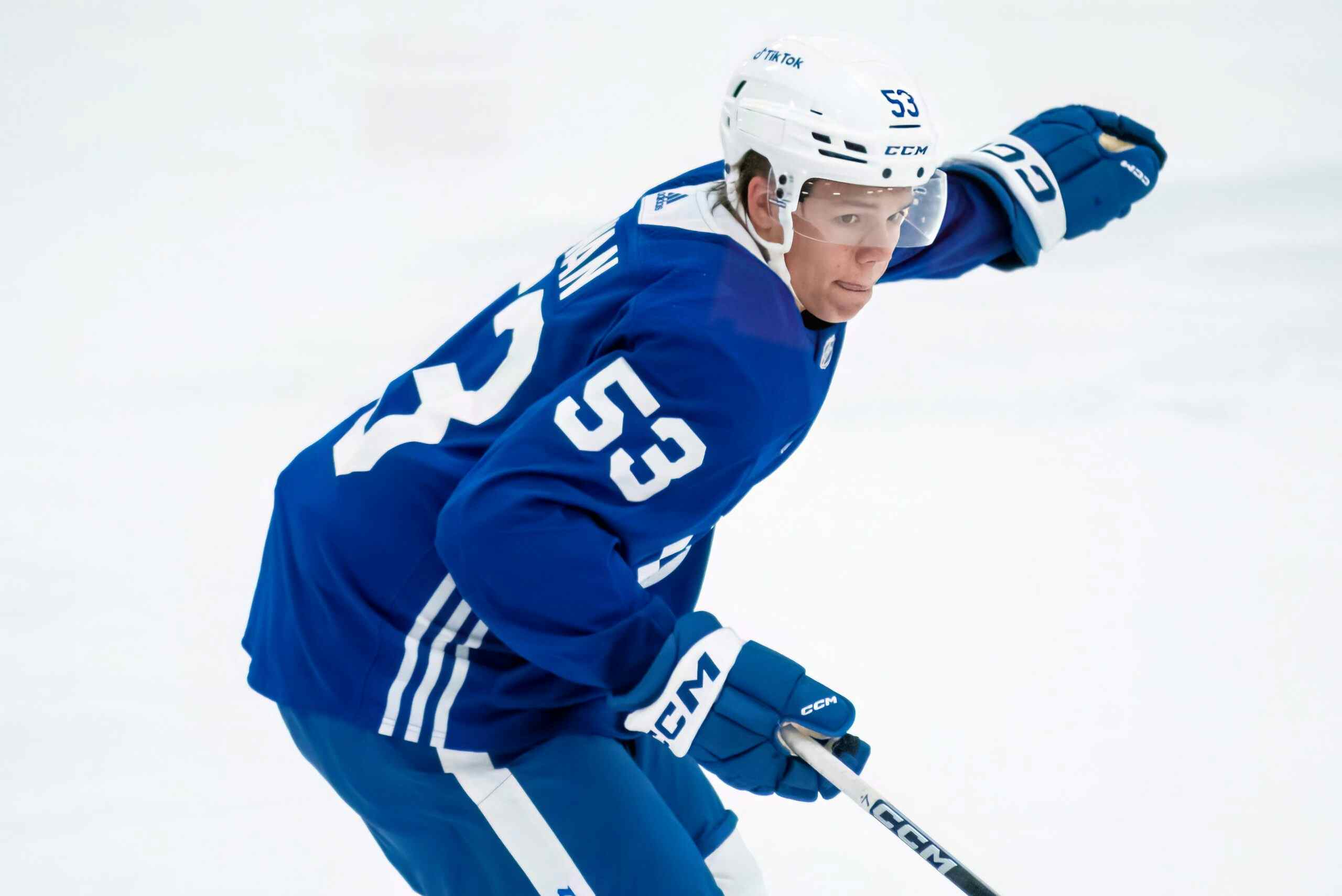Nik Kulemin: A Tale of Two Styles
By Gus Katsaros
11 years ago
The well documented scoring decline of Nik Kulemin has been picked through with a fine-toothed comb both offensively and defensively.
The numbers paint an interesting story.
This isn’t meant to analyze the actual scoring decline. Instead the contrast in the 26-year-old’s approach to the game and type of skills and work ethic opposes each other to the detriment of one thing:
Goal scoring.
Kulemin scored six-of-seven goals in the 3rd period, four coming on the road. He experienced two major droughts, a 23 game spread without a goal (23-0-8-8), following up with three goals in 12 games before another 16-game goal drought.
Some of those goals are shown below, with the recurring theme. Net presence.
The goal against the Habs where he’s streaking through the middle and stops at the net, fighting off PK Subban to bang in a loose puck is a typical battle in front. It’s getting hard to the net, and then battling in front to create scoring chances, not offense, but strict presence as a warm body to create chances when the puck gets close to the goal.
Even in events where he isn’t scoring he’s still making plays getting to the net. I felt he got away from that game somewhat last season after seeing 30 goals in 2010-11, scoring from in close, pouncing on rebounds, quick one-time releases and breakdowns in plays.
He even scored a penalty shot goal (the first penalty shot goal since John Pohl on Dec. 26, 2006). Shown below, take note of his hands and the lack of movement between them until the quickness right at the end.
Bearing down on a breakaway without stickhandling is odd. It worked out here because of a compact quick release and out waiting Ryan Miller. His stick handling is more rigid and industrious than quick and creative. The puck changes the side of his blade five times before shooting up high.
It’s a stark contrast from say Nazem Kadri and his quick hands, which keeps the goaltender guessing until the player commits to a shot.
Kadri shows quickness in his hands, even the late type of quickness, Kulemin showed in his penalty shot goal at the end, beating out Miller.
Getting to the net takes its toll, however, taking advantage of rebounds and loose pucks just because of a determination to get in front is indicative of an exaggerated 17.3% shooting percentage.
Scoring goals is hard enough as it is and the Russian with less net presence means less goals. Defensive responsibility takes away from the battle to get to the front of the net. A responsible defensive stance comes at the cost of getting net side in order to get back in position.

Sharing the burden
As Cam pointed out here Kulemin lined up against some of the hardest competition, furthering the notion of his elevated defensive game. He’s proven an asset defensively, but I would attribute that to better positioning, starting from a greater work ethic and better stick, getting in the way, rather than directing the play defensively.
But he’s not Frank Selke reincarnate.
Getting back into the play and being defensively responsible doesn’t equate a great defensive player, it enhances his presence away from the puck, with a result that is going to take away from the goal scoring ability.
Being in position defensively will take away from the ability to consistently get to the front of the net that will likely keep him from scoring as many goals as in 2010-11, unless he’s getting good enough chances on secondary opportunities to capitalize on rebounds and loose pucks – and enhancing his shooting percentage.
More time on the power play will also up those goal totals.
He played a significantly less amount of time on the power play in ’11-12 slightly over 60 minutes, down from career high 217:55 in ’10-11. By Feb 11 (the day after his daughter was born) he played just over three minutes until a broken finger cut his season short.
Another disparity lies in the amount of players he shared ice with as the Leafs scored. The Leafs scored 2.77 goals per game on the strength of 227 goals ranking 10th overall in both categories in 2011-12.
That’s up distinctly from the 2.60 goals-per-game (21st in NHL) in ’10-11,on 213 goals (also 21st).
| Team | Goals | GF/G |
|---|---|---|
| 2011-12 | 227 | 2.77 |
| 2010-11 | 213 | 2.60 |
Last season, he registered over one GF/20 with Jake Gardiner, Luke Schenn and Cody Franson among players he’s played with in 2011-12 (100 minutes minimum).
In 2010-11, he registered one GF/20 or more with all players except but Schenn, Tomas Kaberle, and Keith Aulie (at least 100 minutes). That’s disparity in numbers.
Toronto locked up Kulemin for two-years $5.6-million, likely to deliver a subtle mix of scoring, but more so for his defensive presence and work ethic away from the puck. While everyone is in agreement that he will likely never hit the 30-goal plateau again, I think it will be due to his focus on the defensive side, taking away from his ability to get to the net often enough to capitalize.
More from KatsHockey
Recent articles from Gus Katsaros





